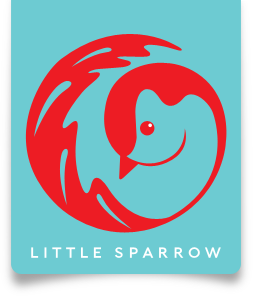HOW DO THEY MAKE THIS STUFF?
Little Sparrow selects the finest teas of different varieties and from carefully selected producers.
All true tea comes from the Camellia sinensis plant, but what are the differences and how are they produced?
Black tea is fermented tea, and is currently the most popular choice in the UK. The tea leaves are picked, withered and then rolled. The process of rolling brings aromatic oils to the surface and encourages oxidization. The rolled leaves are usually left for around two hours. Finally the leaves are fired in an oven with temperatures reaching up to 200 degrees Fahrenheit. Once 80 percent dry, the leaves complete their drying over wood fires. The resulting product is brownish (sometimes black) in colour and is sorted accordingly to size - the larger grade is "leaf grade," and smaller "broken grade" are usually used for tea bags.
Green tea, the fastest growing tea in terms of popularity, is an unfermented tea that undergos minimal processing. The leaves are picked and usually allowed to wither but the process of rolling the leaves, is at this stage skipped. After withering, the leaves are pan fried or fired to prevent oxidation from occurring. The last step is to roll the leaves and dry them one last time for its final shape. The green tea leaves usually remain green.
Oolong tea is part fermented. As with Black Tea, the leaves are withered and rolled, but then they are left for roughly half the time of that of Black tea, once the outside of the leaves are reddish brown but the centre of the leaf is still green. They are then fired at a very high temperature.
White tea is unfermented but picked before the leaves unfurl and have distinctive tiny white hairs, giving the name. Scarcer than green or black tea, it tastes less ‘grassy’ than green tea, is lighter and sweeter in flavour, and boasts considerable health benefits. White tea has the lowest amount of caffine, followed by green tea and then black tea.
Flowering Tea is sculpted by experts from tender green or black tea shoots to resemble blossoming flowers. They are made with great skill and care by hand and often contain real dried flowers that reveal themselves dramatically and gracefully when infused. As well as the usual health benefits associated with green and white tea the added flowers also add extra health benefits. They also make delightful and unusual gifts.
A herbal tea, tisane, or ptisan is a herbal or plant infusion and usually not made from the leaves of the tea bush. Typically, herbal tea is simply the combination of boiling water and dried fruits, flowers or herbs. Herbal tea has been imbibed for nearly as long as written history extends. Documents have been recovered dating back to as early as Ancient Egypt and Ancient China that discuss the enjoyment and uses of herbal tea.



